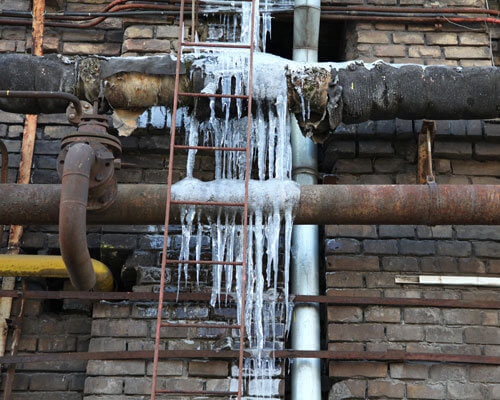Protecting Against Frozen Plumbing: Top Methods for Winter
Protecting Against Frozen Plumbing: Top Methods for Winter
Blog Article
How do you actually feel when it comes to How to Prevent Your Pipes From Freezing?

Cold weather can ruin your pipes, particularly by freezing pipelines. Here's exactly how to stop it from happening and what to do if it does.
Introduction
As temperature levels decrease, the threat of frozen pipelines rises, possibly resulting in pricey repairs and water damage. Comprehending how to prevent frozen pipes is important for property owners in cold climates.
Understanding Icy Pipelines
What triggers pipes to freeze?
Pipes freeze when revealed to temperature levels below 32 ° F (0 ° C) for extended durations. As water inside the pipelines freezes, it increases, putting pressure on the pipeline wall surfaces and potentially creating them to rupture.
Risks and problems
Frozen pipes can lead to water supply disturbances, building damage, and costly repairs. Ruptured pipelines can flood homes and trigger considerable structural damage.
Indicators of Frozen Pipeline
Identifying icy pipes early can stop them from rupturing.
How to identify icy pipes
Try to find lowered water circulation from taps, unusual odors or noises from pipes, and noticeable frost on revealed pipes.
Avoidance Tips
Shielding prone pipelines
Wrap pipes in insulation sleeves or utilize warm tape to shield them from freezing temperatures. Focus on pipelines in unheated or exterior locations of the home.
Home heating strategies
Maintain interior rooms properly heated, especially locations with plumbing. Open up cupboard doors to allow cozy air to circulate around pipelines under sinks.
Safeguarding Exterior Plumbing
Yard hose pipes and exterior faucets
Separate and drain yard hoses prior to winter. Set up frost-proof faucets or cover outdoor faucets with protected caps.
What to Do If Your Pipes Freeze
Immediate activities to take
If you presume icy pipes, keep taps open up to soothe pressure as the ice thaws. Make use of a hairdryer or towels taken in hot water to thaw pipes gradually.
Long-Term Solutions
Architectural changes
Think about rerouting pipes far from exterior walls or unheated areas. Add added insulation to attic rooms, basements, and crawl spaces.
Upgrading insulation
Purchase high-grade insulation for pipes, attics, and walls. Correct insulation assists preserve constant temperatures and reduces the danger of frozen pipelines.
Final thought
Protecting against icy pipes needs proactive steps and fast reactions. By comprehending the causes, indicators, and safety nets, homeowners can shield their pipes during cold weather.
5 Ways to Prevent Frozen Pipes
Drain Outdoor Faucets and Disconnect Hoses
First, close the shut-off valve that controls the flow of water in the pipe to your outdoor faucet. Then, head outside to disconnect and drain your hose and open the outdoor faucet to allow the water to completely drain out of the line. Turn off the faucet when done. Finally, head back to the shut-off valve and drain the remaining water inside the pipe into a bucket or container. Additionally, if you have a home irrigation system, you should consider hiring an expert to clear the system of water each year.
Insulate Pipes
One of the best and most cost-effective methods for preventing frozen water pipes is to wrap your pipes with insulation. This is especially important for areas in your home that aren’t exposed to heat, such as an attic. We suggest using foam sleeves, which can typically be found at your local hardware store.
Keep Heat Running at 65
Your pipes are located inside your walls, and the temperature there is much colder than the rest of the house. To prevent your pipes from freezing, The Insurance Information Institute suggests that you keep your home heated to at least 65 degrees, even when traveling. You may want to invest in smart devices that can keep an eye on the temperature in your home while you’re away.
Leave Water Dripping
Moving water — even a small trickle — can prevent ice from forming inside your pipes. When freezing temps are imminent, start a drip of water from all faucets that serve exposed pipes. Leaving a few faucets running will also help relieve pressure inside the pipes and help prevent a rupture if the water inside freezes.
Open Cupboard Doors
Warm your kitchen and bathroom pipes by opening cupboards and vanities. You should also leave your interior doors ajar to help warm air circulate evenly throughout your home.
:strip_icc()/snow-outdoor-faucet-pipes-4af65d1e5e904fb1aa7bf74071fe5d89.jpg)
Hopefully you liked our part on Preventing and dealing with frozen pipes. Thank you so much for taking time to browse our piece of content. Do you know another individual who is in to the topic? Please feel free to promote it. Thanks a lot for being here. Return soon.
Instant Quote Report this page